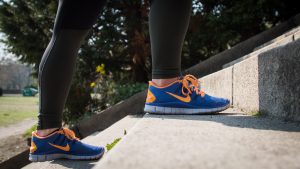




Exercise helps reduce the symptoms of anxiety and depression.
Many therapists use exercise as an adjunct therapy for people diagnosed with anxiety or depression. Studies found that it actually worked better than medications often used for the same reason. One recent study looked at the effects of walking briskly for ten minutes compared to a 45-minute exercise session and found it brought comparable results more quickly. The effects of the ten-minute walk can bring relief from feelings of anxiety and depression for several hours.
You won’t get a full body workout or improve all areas of fitness, but it’s a start.
While walking is a good aerobic exercise that can help with weight loss and will build lower body strength, it doesn’t replace a full body workout or complete program of fitness that includes flexibility and total body strength building exercises. It can be a great place to start for anyone who is intimidated by a full exercise program and also great as a stress reliever that’s available anytime.
Your walk can do more for you than just relieve stress.
If you want to get more from your walking experience, such as burning more calories or getting more heart healthy benefits, modify your walk. Use an HIIT—high intensity interval training—approach. You simply modify your speed and intensity. Start by warming your muscles a bit before you walk. You’ll walk at two different speeds. The first is the fastest you can go, raising your heart rate, for a few minutes. Then, reduce the intensity and speed and walk at a recovery rate. Let your body be your guide. If you can only go at a high intensity speed for thirty seconds and need two minutes for recovery, it’s not a problem, just alternate between those two speeds.
- You don’t have to run to be healthy. One study showed that walking was easier on the joints than running regularly. If you’re obese, consider walking at first to protect the knee and hip joints.
- Practice having good posture when you walk. Hold your head high and in line with your body, as though you’re pushing the top of your through the clouds. Good posture makes walking easier and builds core muscles.
- Be careful when you walk. Always let someone know you’re walking and the path you’ll take. It’s best to walk with a friend for safety. Wear reflective clothing if you walk at night.
- Keep your upper body straight but relax and swing your arms and take long strides. Always carry water to hydrate if you’re walking more than a few minutes.
For more information, contact us today at Travel Trim
